-Stage 4.5.4-
DINOSAURS! From Cultural to Pop Culture
"Modern Times - 1900's"
The Modern Times are the times when our current understanding of dinosaurs is based on science and as that science has evolved, the impact that that knowledge has on our cultural and pop cultural perception of the dinosaurs has evolved with it.
For anyone that has driven around the western United States and had an eye out for dinosaurs they have likely seen a statue of the Sinclair Dinosaur outside of Sinclair Oil stations or other gas stations that sell Sinclair Oil (such as Holiday Gas).
.jpg)
A fiberglass Apatosaurus by the name of DINO in front of a Sinclair near Dinosaur, CO
The dinosaur, with the apropos name of DINO, was first introduced as the Sinclair mascot in 1930 and quickly became very popular with it being registered as a trademark in 1932.
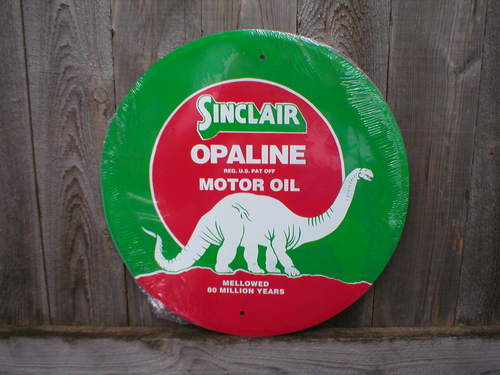
Some of the original advertisement with DINO on it for Sinclair oil.
Upon creation for the logo, the dinosaur was originally referred to as a Brontosaurus, however scientific consensus since that time determined that the Brontosaurus was more correctly to be called an Apatosaurus. This is because they were deemed to be the same animal and the Apatosaurus was named first, hence the name takes priority. Recent research however has cast that into doubt and the name of "Brontosaurus" may yet again be a valid name (Tschopp et al., 2015). It is unknown if Sinclair is going to change DINO back though.
Following the success of DINO, the dinosaur started to appear in more locations. In the 1960's fiberglass installations of DINO began to appear at Sinclair Oil stations, a tradition that still continues today. I personally love the fact that this particular DINO we found had a saddle attached. This made for perfect photo opportunities to be sure.
.jpg)
.jpg)
Not only was DINO introduced around the country in the form of fiberglass models but it began showing up in the Macy's Thanksgiving Day Parade in 1963. And although he stopped attending in 1976, he thankfully began again in 2015.
.jpeg)
.jpeg)
DINO from the 2018 Macy Thanksgiving Day Parade
I would be remiss if I didn't point out that despite the popular assumption that oil comes from dinosaurs (hence the use of a dinosaur as a symbol of an oil company being a smart move), oil doesn't actually come from dinosaurs. As was pointed out in a previous Geology Fact...
Despite the common misconception, most fossil fuels do not actually come from dinosaurs or fossils for that matter. Oil and natural gas formed mostly from bacteria that died and blanketed the bottom of the sea before being buried and “cooked” into the fossil fuels we all know and love.
References
https://www.sinclairoil.com/dino-history
Tschopp E, Mateus O, Benson RBJ. 2015. A specimen-level phylogenetic analysis and taxonomic revision of Diplodocidae (Dinosauria, Sauropoda) PeerJ 3:e857 https://doi.org/10.7717/peerj.857
Located within 1987's Robocop by Paul Verhoeven, is a classic example of dinosaurs within pop culture, especially renditions of dinosaurs that didn't keep up with their scientific equivalents.
The movie Robocop is broken up by several fake, in-universe movies, including this one for the 6000 SUX, a gas guzzling vehicle that gets 8.2 mpg. The dinosaur "commercial", located at the 1:15:59 minute mark, uses a classic stop-motion dinosaur effect, similar to those seen in 1933's King Kong, as well as many movies afterwards through the 1950's and 1960's.
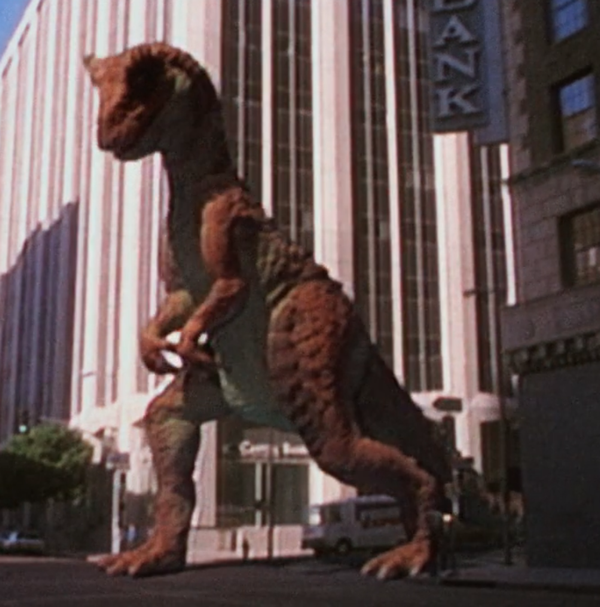
The dinosaur from Robocop (1987)
The dinosaur in the commercial is a questionable species, not really resembling anything known to have existed. It is a clearly a theropod, similar to a T. rex, however with three digits on its hands like an Allosaurus with relatively long arms. It is also looking to be about 5 stories tall, or ~75 feet tall, based on the building in the background. This is far taller, even with the antiquated upright stance in the commercial, of any known theropod. At this height, this dinosaur is reaching the height levels of the tallest dinosaurs to ever have lived, like the Sauroposeidon proteles.
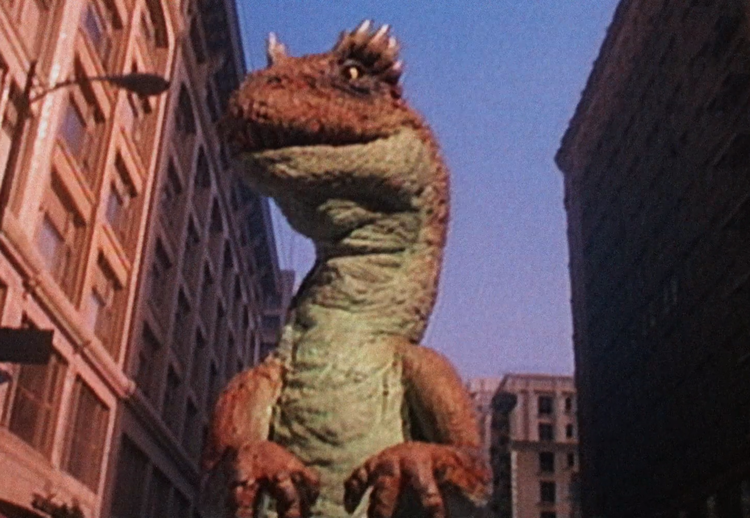
Front view of the dinosaur from Robocop (1987)
The commercial dinosaur also has a series of horns/spikes above its eyes, like Carnotaurus. However, Carnotaurus only had one spike over each eye, and also had significantly reduced forelimbs, similar to T. rex.
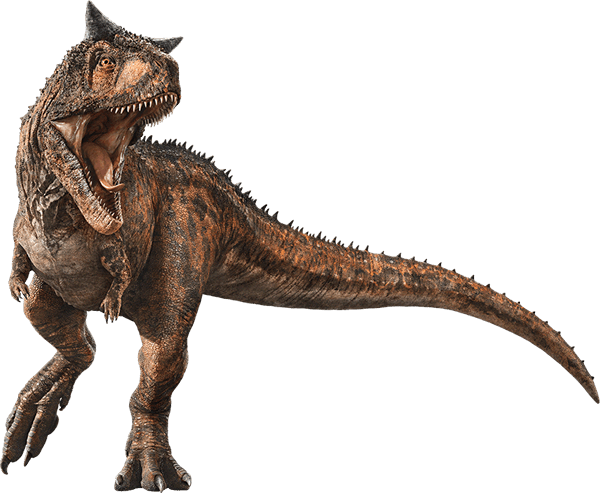
Carnotaurus for comparison. Image from the Dinosaur Wiki.
References
http://www.bbc.com/earth/story/20160201-meet-the-most-massive-dinosaur-to-ever-stomp-the-earth
https://dino.wikia.org/wiki/Carnotaurus
I had previously done a series of paleontology and geology related entries from Star Trek on my blog The Geology P.A.G.E., however this is the single greatest dinosaur related Star Trek entry ever. The episode is from Star Trek: Voyager, Season 3, Episode 23, entitled "Distant Origin".
This clip above is just a small portion of the episode, in which I highly recommend watching the whole thing if possible. In the episode, the crew of the Voyager are faced with the Voth. A species that, after some genetic determination, evolved from hadrosaursians and somehow ended up across the galaxy into the Delta Quadrant. Their supposition was that this hadrosaurian species survived the extinction of the dinosaurs and were isolated on an island, where eventually they evolved space-faring technology to somehow eventually leave Earth and end up across the cosmos. The best part is when they start researching the history of the Voth, leading them to Eryops, "from the Devonian era".
Eryops from the Star Trek: Voyager episode "Distant Origin"
Their reconstruction of Eryops though, does not actually resemble the current reconstructions (pictured below). Nor is it from the Devonian, having been found in Permian deposits over 100 million years later. However, this reconstruction looks amazingly like a pelycosaur, like Dimetrodon, just without the sail.
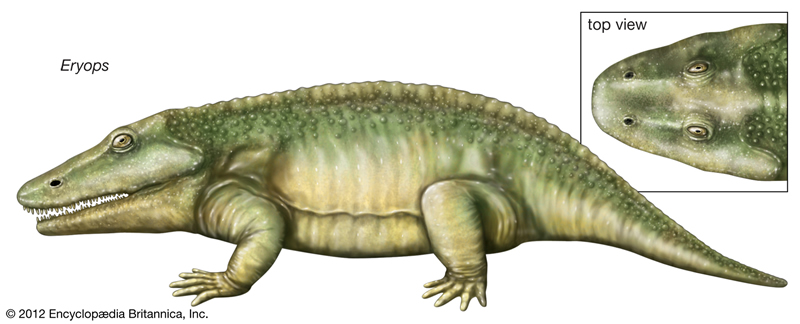
Eryops reconstruction from Britannica.
Eryops was an amphibian, and was supposed to stand in as the "last common ancestor of cold-blooded and warm-blooded organisms." My assumption is that they were looking for the split between mammals and reptiles. However, that is not entirely an accurate thing, since mammals evolved much later. What we need to search for is the split between Synapsids (the group that evolved into and includes mammals) and Diapsids (the group that includes crocodilians, dinosaurs, and birds). Both of these groups fall under the classification of amniotes.
The branch between these groups is thought to have taken place in the Lower Permian, approximately 300 million years ago and would have involved early synapsids, such as the pelycosaurs (kind of pictured in the show). And although pelycosaurs are considered basal synapsids, not the ancestors to both dinosaurs and mammals, it's not out of the realm of possibility that the actual ancestor would have several similar characteristics.
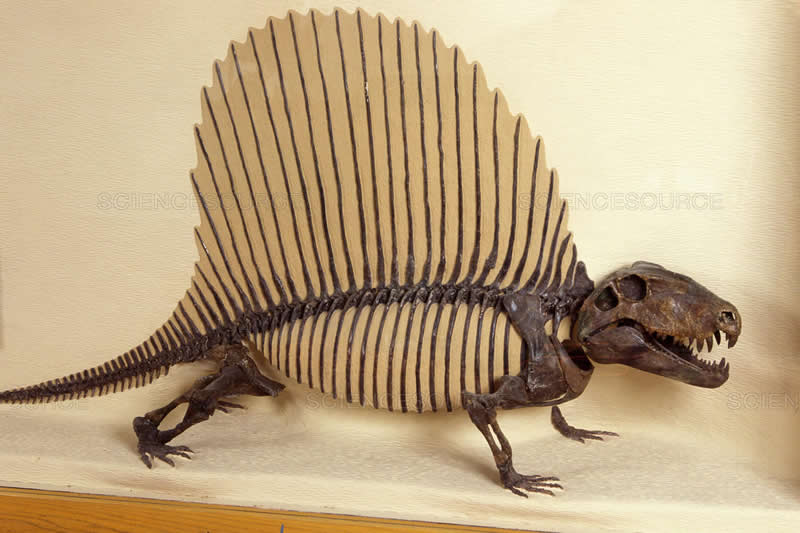
Dimetrodon skeleton. Image courtesy of ScienceSourceImages.
So although their name dropping of Eryops was 100% incorrect, perhaps their model was a bit closer to reality.
The show also asks what was the "most highly evolved cold-blooded organism to develop from the Eryops" and the show pictures a Hadrosaur. Specifically, a Parasaurolophus.
The "most highly evolved" dinosaur according to Star Trek: Voyager.
Evolutionarily speaking, all reptiles, and this includes all dinosaurs/birds, would have evolved from the basal diapsids. So by saying the "most highly evolved", you are making assumptions that one organism is more evolved than another one, which is not how evolution works. There is no organism that is "more highly evolved" than another. Each organism is adapted to their own environment. I am assuming by "more highly evolved" they mean more intelligent, which is another matter entirely. And even then, it is assumed that the theropod branch of dinosaurs, the one that evolves into birds, would be much more intelligent than the sauropods, which were larger and lumbering herbivorous dinosaurs. Heck, the birds even survived the end Cretaceous extinction, which none of the Sauropods did. (well except this one branch that went off into space.

Evolution of the Voth from their Parasaurolophus ancestors
My last point about the episode is where they show where the Parasaurolophus evolved into a "more advanced" race, the Voth in this instance. This evolutionary idea that should the dinosaurs have survived the extinction at the end of the Cretaceous (minus birds of course), they had the potential to evolve into a humanoid species. This is not a new concept to Star Trek. Back in 1982, (Russell and Séguin) proposed a similar idea while studying the troodontid Stenonychosaurus.
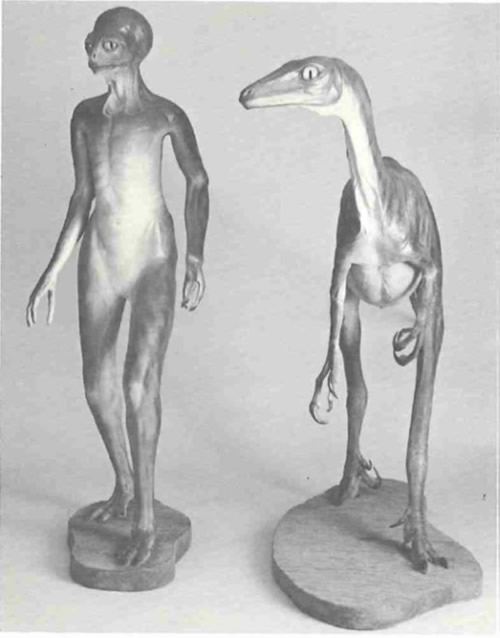
Russell, D. A., and Séguin, R., 1982, Reconstructions of the small Cretaceous theropod Stenonychosaurus inequalis and a hypothetical dinosaurid: Syllogeus, v. 37, p. 1-43
While being a bit tongue in cheek, it has prompted discussion about the possibilities of future evolution of the non-avian dinosaurs ever since.
So, however you see it, this episode was a dinosaur wonderland.
References
https://www.britannica.com/animal/Eryops
Russell, D. A., and Séguin, R., 1982, Reconstructions of the small Cretaceous theropod Stenonychosaurus inequalis and a hypothetical dinosaurid: Syllogeus, v. 37, p. 1-43

